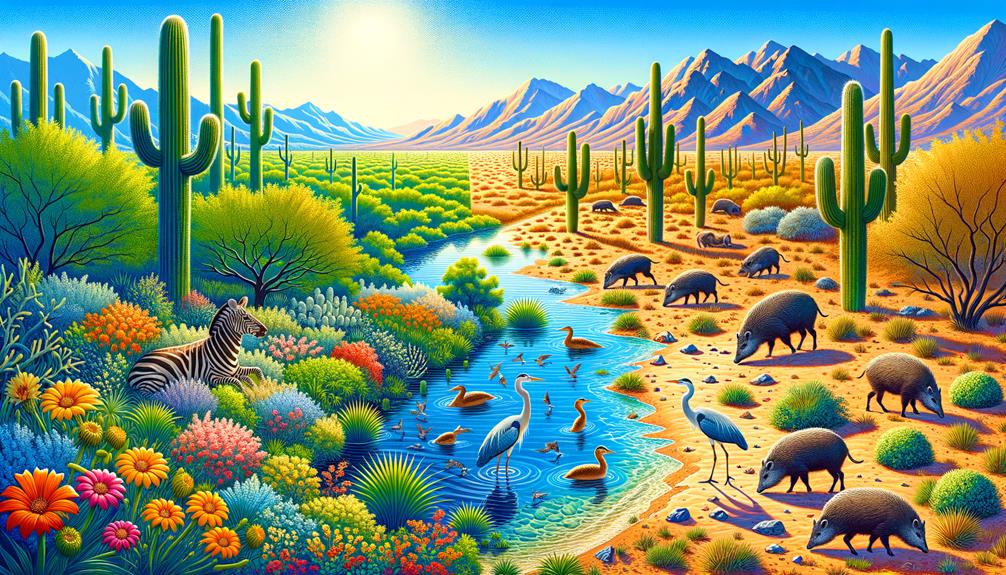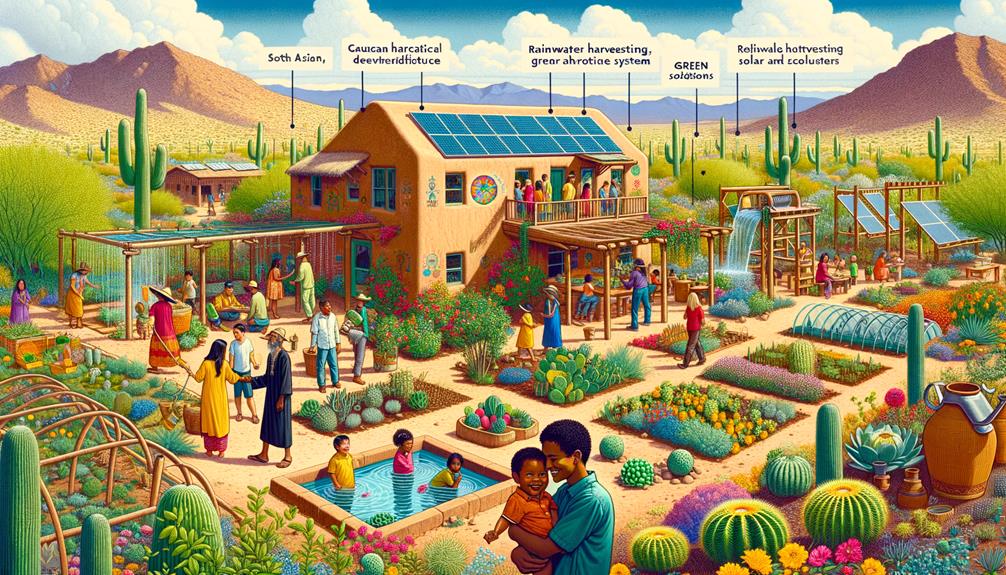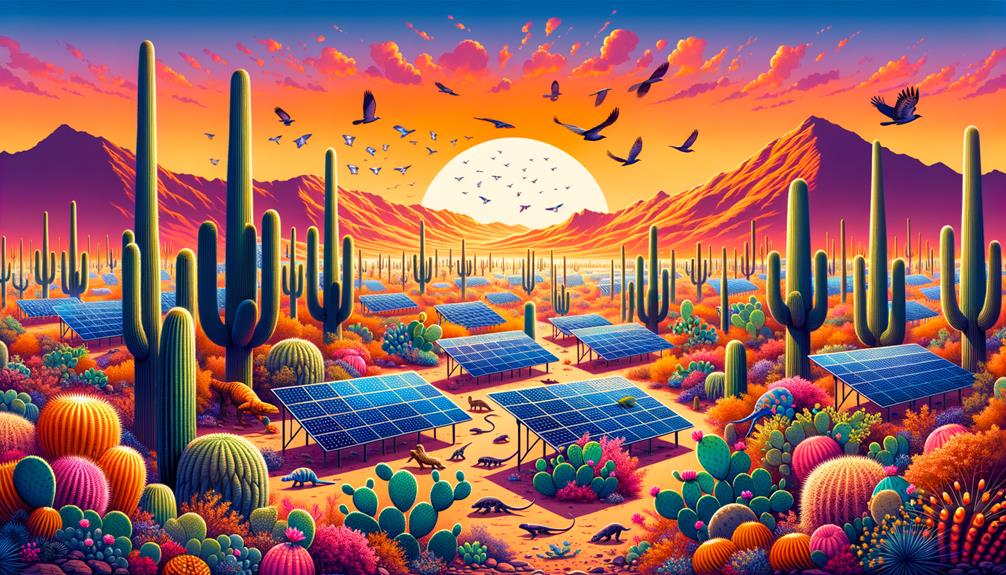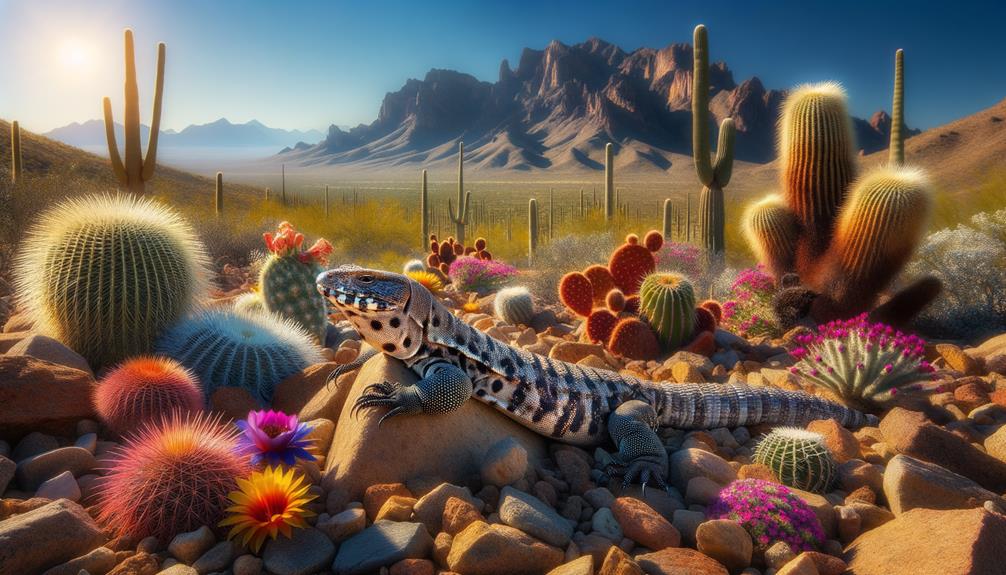Living in Arizona, I've seen firsthand how projects like Tucson's Santa Cruz River and Phoenix's Tres Rios Wetlands have brought new life to our desert landscapes. By using millions of gallons of recycled water, these initiatives have restored dried-up rivers and wetlands, reviving native vegetation and wildlife. It's remarkable to see how these efforts have boosted biodiversity, created recreational spaces, and stimulated local economies. With strategic investments and collaborative management, these ecosystems thrive, transforming barren landscapes into lush, sustainable oases. If you're interested in learning more about how we balance modern living with nature in our arid backyard, there's a lot to explore.
Key Takeaways
Tucson's Santa Cruz River and Phoenix's Tres Rios Wetlands have found innovative ways to revive ecosystems and support biodiversity by using recycled water.
In Arizona, collaborative management systems like Las Cienegas National Conservation Area play a vital role in sustaining the vitality of the state's wetlands.
Restoration projects in Arizona have created essential recreational spaces, benefiting marginalized communities and boosting local economies.
Strategic investments in water recycling and wetland restoration are crucial in combating climate change and enhancing community resilience.
In Arizona, climate adaptation projects, such as expanding urban tree canopies, are helping mitigate urban heat and promote sustainable living.
Reviving Parched Rivers
Here's how Arizona's communities have successfully revitalized their parched rivers: By combining innovative water recycling with strategic investments, Desert Dwellers have managed to revitalize their precious water supply and foster thriving ecosystems.
The Santa Cruz River in Tucson is a prime example of this transformation. In 2019, the city began releasing 2.8 million gallons of recycled water daily into a one-mile stretch. This infusion of water not only revived a perennial flowing river but also encouraged the return of native vegetation and wildlife, turning a barren area into a vibrant natural habitat.
Another success story is the Tres Rios Wetlands Restoration project in Phoenix. By using a staggering 78 million gallons of reclaimed wastewater each day, this initiative has restored over 150 acres of wetlands along the Salt, Gila, and Agua Fria Rivers. The result is a flourishing ecosystem and a new recreational haven for local communities.
These efforts highlight the importance of water recycling in maintaining a sustainable water supply in Arizona's arid landscape. By investing in such projects, Desert Dwellers aren't just ensuring their survival – they're creating spaces where nature and communities can thrive together.
Restoring Vital Wetlands

Arizona's wetlands, once on the verge of collapse, are now thriving thanks to bold restoration projects that merge ecological science with community involvement. The Tres Rios Wetlands project in Phoenix is a prime example. By releasing 78 million gallons of reclaimed wastewater daily into the Salt and Gila Rivers, we've brought back over 150 species to the restored wetlands. This effort showcases the power of water conservation in transforming our desert landscapes.
In Tucson, the Santa Cruz River restoration project is another success story. By releasing 2.8 million gallons of recycled water daily into a mile-long stretch, we've revived this dried-up river, allowing native vegetation and wildlife to flourish. These projects aren't just ecological victories; they also benefit marginalized communities by increasing outdoor access and stimulating local economies.
The Las Cienegas National Conservation Area, created in 1988 through the purchase of land and water rights from a mining company, stands as an ecological oasis. Our collaborative management system, involving diverse stakeholders, ensures the area's sustained vitality.
These initiatives demonstrate that through determined action and community involvement, we're restoring Arizona's wetlands. It's a testament to our ability to rejuvenate essential ecosystems, even in a desert.
Building Ecological Oases

Building ecological oases is the next step in our commitment to restoring Arizona's natural landscapes. In Phoenix, we're tackling the urban heat island effect, which makes the Sonoran Desert's harsh climate even more extreme. A standout example is the Tres Rios Wetlands Restoration project. By using 78 million gallons of reclaimed wastewater daily, we've brought over 150 species of plants and animals back to life, creating a vibrant oasis in the heart of the city.
Similarly, the Santa Cruz River Restoration Project in Tucson has revitalized a 1-mile stretch of the river, releasing 2.8 million gallons of recycled water daily. This effort has allowed native vegetation to flourish and wildlife to return, showing that even seemingly lifeless areas can be rejuvenated.
The Las Cienegas National Conservation Area, established in 1988, is a testament to the power of collaboration. By purchasing land and water rights, we've created a protected ecological oasis that showcases the potential of strategic investment and co-management systems. These projects not only restore habitats but also enrich communities, fostering a connection to nature that fuels our desire for freedom and sustainability.
Enhancing Community Resilience

Arizona's community resilience is often measured by its ability to adapt and thrive in the face of environmental challenges. The state's extensive restoration projects, such as the Santa Cruz River and Tres Rios Wetlands, have revitalized parched landscapes, boosted biodiversity, and created recreational spaces for marginalized communities. Through collaborative management systems, like the one at Las Cienegas National Conservation Area, diverse stakeholders work together to protect these ecological oases.
In the face of climate change and rapid population growth, Arizona's efforts are truly transformative. By utilizing existing infrastructure, like reclaimed wastewater, to sustain wetlands, these restoration projects demonstrate cost-effective resilience-building.
| Project | Impact on Community | Economic Stimulus |
|---|---|---|
| Santa Cruz River | Increased biodiversity | Job creation |
| Tres Rios Wetlands | Recreation for communities | Local economy boost |
| Las Cienegas NCA | Stakeholder collaboration | Sustainable development |
Innovative building materials and air conditioning play a vital role in keeping communities livable as temperatures rise. With investments ranging from $850,000 to $99.32 million, Arizona's commitment to enhancing resilience is clear, showcasing how strategic restoration can combat climate change and foster thriving, adaptable communities.
Investing in Climate Adaptation

As Arizona's climate challenges intensify, innovative urban heat mitigation strategies and resource-efficient infrastructure are becoming crucial. Cities like Phoenix are taking action by expanding urban tree canopies, using cool pavement technologies, and designing energy-efficient buildings to combat the urban heat island effect. This effort goes beyond comfort – it's a matter of survival in the desert.
The Santa Cruz River Restoration Project in Tucson is a prime example of how we can revitalize the environment. By releasing 2.8 million gallons of recycled water daily, we've brought a previously dried-up river back to life, enabling native vegetation and wildlife to flourish.
Federal government initiatives have also played a vital role. The Tres Rios Wetlands Restoration project in Phoenix has transformed 128 acres of dried river confluences into a thriving ecosystem, using 78 million gallons of reclaimed wastewater daily. This rejuvenation mirrors post-war reconstruction efforts, but now we're focused on nurturing nature.
Climate adaptation projects are making a tangible impact on marginalized communities as well. They increase access to nature, stimulate local economies, and build community resilience. In Arizona's desert, investing in climate adaptation means investing in a sustainable future for everyone.
Frequently Asked Questions
What Are Desert Dwellers?
Desert dwellers, like me, revel in the harsh yet beautiful environment of golden sands and scorching sun. We've adapted to this unforgiving landscape by developing innovative ways to conserve water, harness renewable energy, and utilize passive cooling methods to live in harmony with our surroundings.
Are There People Living in the Sonoran Desert?
The Sonoran Desert is home to over 6.5 million residents, including indigenous communities, who have developed sustainable practices to thrive in this harsh climate. It's remarkable to see how they've adapted to their environment, making the desert a thriving habitat despite the challenges it presents.
What Do You Call a Person Who Lives in the Desert?
A person who calls the desert home is a true adventurer. I've always been fascinated by their resourceful lifestyle, where conserving water, harnessing renewable energy, and living sustainably are essential to thriving in the harsh yet beautiful desert landscape.
What Is the Name of the Desert by Scottsdale Arizona?
Imagine vast stretches of golden sands and towering cacti; that's the Sonoran Desert near Scottsdale, Arizona. This expansive, sun-drenched landscape beckons the adventurous spirit, offering endless freedom and breathtaking beauty.



